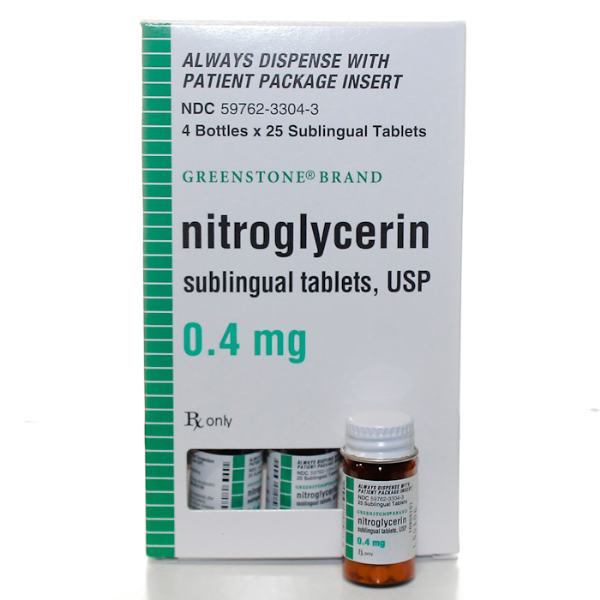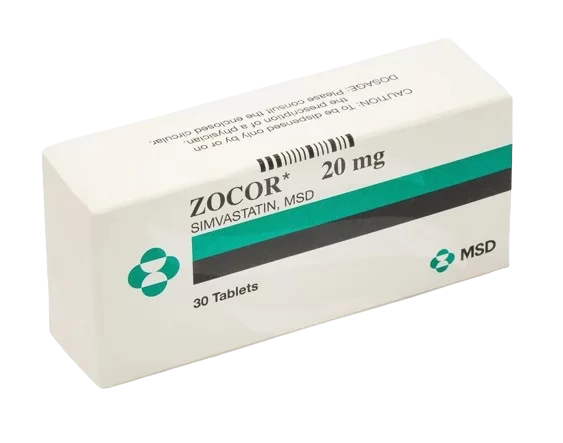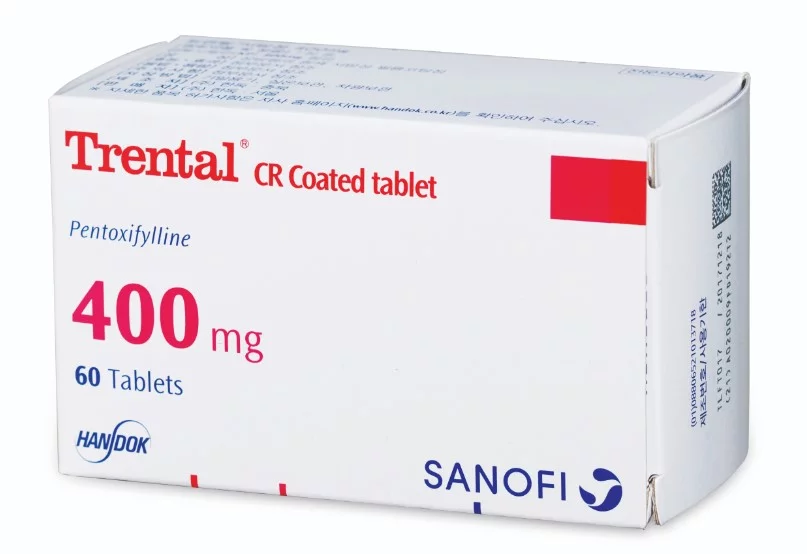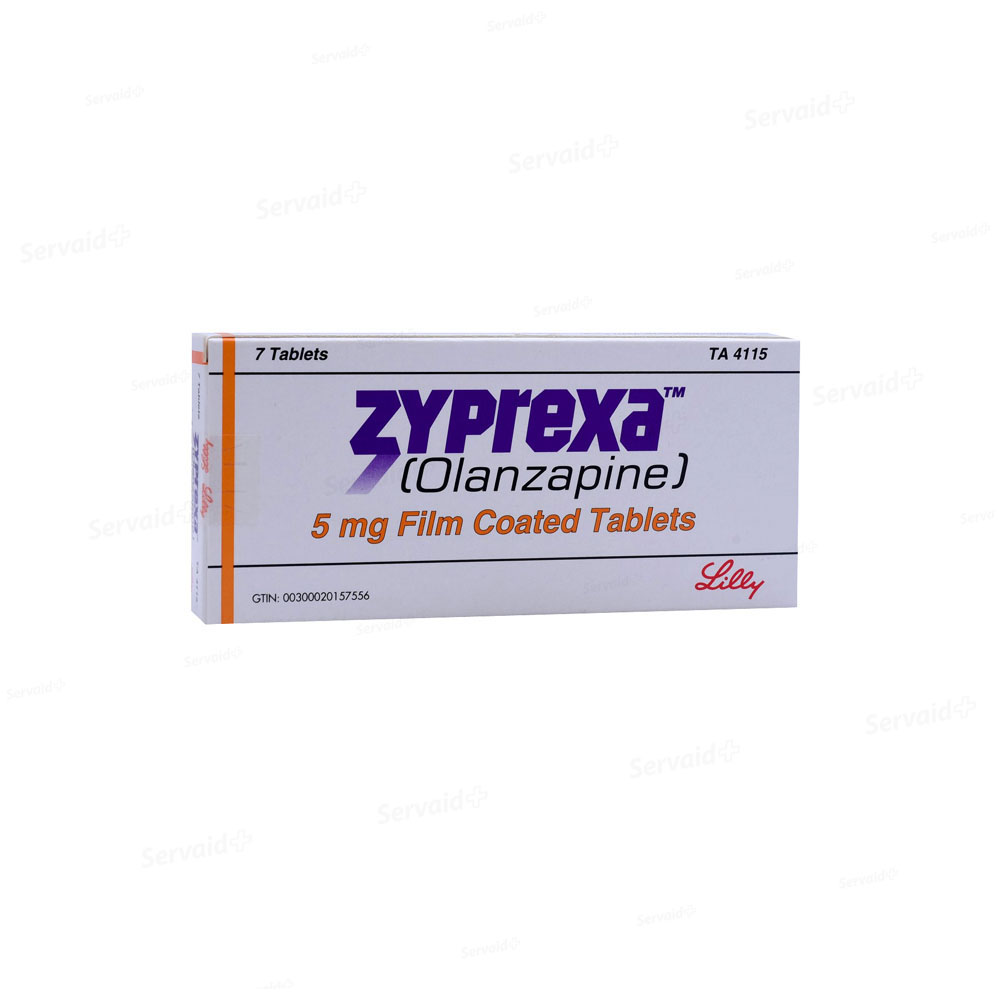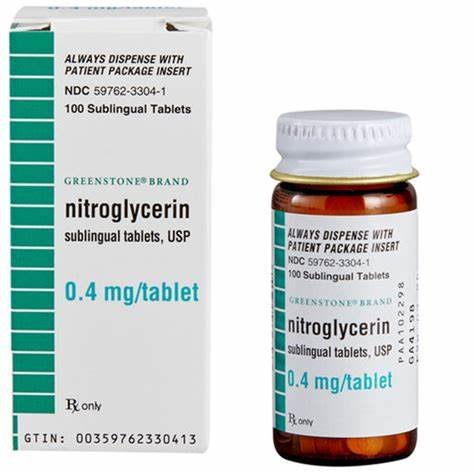
Nitroglycerin
Nitroglycerin - 5mg
| Product | Per Pill | Savings | Per Pack | Order |
|---|---|---|---|---|
| 30 caps | $1.53 | $45.92 | Buy Now | |
| 60 caps | $1.22 | $18.54 | $91.85 $73.31 | Buy Now |
| 90 caps | $1.12 | $37.07 | $137.77 $100.70 | Buy Now |
| 120 caps | $1.07 | $55.61 | $183.70 $128.09 | Buy Now |
| 180 caps | $1.02 | $92.68 | $275.54 $182.86 | Buy Now |
| 270 caps | $0.98 | $148.29 | $413.31 $265.02 | Buy Now |
| 360 caps | $0.96 | $203.90 | $551.08 $347.18 | Buy Now |
| 30 caps | $2.31 | $69.30 | Buy Now | |
| 60 caps | $1.86 | $27.22 | $138.60 $111.38 | Buy Now |
| 90 caps | $1.71 | $54.43 | $207.90 $153.47 | Buy Now |
| 120 caps | $1.63 | $81.65 | $277.20 $195.55 | Buy Now |
| 180 caps | $1.55 | $136.08 | $415.80 $279.72 | Buy Now |
| 270 caps | $1.50 | $217.73 | $623.70 $405.97 | Buy Now |
| 360 caps | $1.48 | $299.38 | $831.60 $532.22 | Buy Now |
Overview
General Introduction Nitroglycerin is a medication primarily used to treat chest pain (angina) in people with coronary artery disease. It was first synthesized in 1847 and has since become a staple in cardiovascular treatment. Nitroglycerin works by relaxing and widening blood vessels, improving blood flow to the heart, and reducing its workload, which helps alleviate angina symptoms.
Key Benefits and Unique Properties
- Rapid Relief: Provides quick relief from acute angina attacks, typically within minutes.
- Versatile Formulations: Available in various forms, including sublingual tablets, sprays, patches, and ointments, catering to different patient needs.
- Proven Efficacy: Extensively studied and proven effective in treating and preventing angina.
- Short Half-Life: Quickly metabolized and eliminated from the body, minimizing long-term side effects.
- Emergency Use: Widely used in emergency settings for immediate relief of chest pain.
Effectiveness Nitroglycerin is highly effective in relieving acute angina attacks due to its rapid onset of action. Clinical studies have shown significant improvement in exercise tolerance and reduction in angina frequency in patients using nitroglycerin. Its ability to quickly dilate coronary arteries and improve blood flow makes it a critical medication in managing ischemic heart disease.
Safety and Tolerability Generally well-tolerated, with common side effects including headache, dizziness, and flushing. Rare but serious side effects can include severe hypotension and reflex tachycardia. Proper dosing and patient education on its use can help minimize these risks. Regular monitoring by healthcare providers ensures safe and effective long-term use.
Indications for Use
Diseases and Conditions Treated Nitroglycerin is primarily indicated for the management and treatment of angina pectoris, both acute and chronic. It is also used in heart failure and to control blood pressure during surgeries. By relaxing and dilating blood vessels, nitroglycerin reduces the heart's workload and oxygen demand, providing relief from angina and improving overall cardiac function.
Primary Symptoms and Indications
- Angina Pectoris: Effective in relieving chest pain associated with coronary artery disease. It helps reduce the frequency and severity of angina attacks.
- Heart Failure: Used as an adjunct therapy in acute heart failure to reduce cardiac workload and improve symptoms.
- Hypertension: Employed to control blood pressure during surgical procedures, particularly in hypertensive crises.
Dosage and Administration
Dosage and Intake
- Sublingual Tablets: Commonly used for acute angina attacks. The typical dose is 0.3 to 0.6 mg placed under the tongue, which can be repeated every 5 minutes up to 3 doses if needed.
- Transdermal Patches: Used for chronic angina management. Patches are applied to the skin and provide a continuous release of medication, typically replaced every 24 hours.
- Ointment: Applied to the skin, providing gradual absorption for chronic management. Dosage varies based on the product and patient needs.
Timing and Frequency
- Acute Angina: Sublingual tablets or sprays should be used at the onset of chest pain. If pain persists after 3 doses, seek emergency medical help.
- Chronic Angina: Transdermal patches or ointments are used regularly as prescribed to prevent angina attacks. Ensure a nitrate-free period of 10-12 hours daily to prevent tolerance.
Additional Recommendations
- Hydration: Maintain adequate hydration, especially if experiencing dizziness.
- Missed Dose: For chronic use, apply the next dose as soon as remembered but skip if it's almost time for the next scheduled dose. Do not double the dose.
Mechanism of Action
Description of Mechanism Nitroglycerin works by releasing nitric oxide (NO), which relaxes vascular smooth muscle and dilates both arteries and veins. This vasodilation reduces venous return to the heart (preload) and arterial resistance (afterload), lowering myocardial oxygen demand and relieving angina.
Biochemical Processes Nitroglycerin is converted to nitric oxide within the body, primarily in the endothelium of blood vessels. NO activates guanylate cyclase, increasing cyclic GMP levels, which leads to smooth muscle relaxation. This biochemical pathway results in vasodilation, increased blood flow, and reduced cardiac workload.
Physiological Effects
- Organ and System Functions: Reduces cardiac preload and afterload, improves coronary blood flow, and lowers myocardial oxygen consumption.
- Therapeutic Effects: Relieves chest pain, improves exercise tolerance, and prevents angina attacks. By optimizing cardiac function, it enhances the quality of life for patients with ischemic heart disease.
Composition
Active Ingredients Nitroglycerin is the active ingredient in its various formulations. It is a potent vasodilator that directly affects the vascular smooth muscle to relieve angina.
Inactive Ingredients The inactive ingredients vary by formulation but may include lactose, microcrystalline cellulose, stearic acid (in tablets), ethanol, propellant (in sprays), and other excipients that stabilize the medication and enhance its delivery.
Side Effects
General Introduction Understanding potential side effects is crucial for the safe use of nitroglycerin. Patients should be aware of both common and serious side effects to monitor their health effectively while on the medication.
Possible Side Effects
- Common Side Effects: Headache, dizziness, flushing, and hypotension are commonly reported. These side effects are generally mild and transient.
- Less Common Side Effects: Nausea, vomiting, and skin irritation (with transdermal forms) can occur.
- Serious Side Effects: Severe hypotension, reflex tachycardia, and syncope are rare but require immediate medical attention. Continuous monitoring and proper usage can help manage these risks.
Frequency and Severity Common side effects are generally mild and do not significantly interfere with daily activities. Severe side effects are rare but can be serious, necessitating immediate medical intervention. Regular follow-ups and patient education on correct usage can minimize risks.
Prevention of Side Effects
General Introduction Preventing side effects is key to maximizing the therapeutic benefits of nitroglycerin. By following preventive measures, patients can reduce the likelihood of experiencing adverse reactions.
Tips for Prevention
- Follow Dosage Instructions: Use as directed to avoid excessive use, which can lead to adverse effects like severe hypotension.
- Stay Hydrated: Adequate hydration can help reduce dizziness and other side effects.
- Consult Healthcare Providers: Regular consultations can help manage and prevent adverse reactions. Inform your healthcare provider about any other medications or supplements to avoid potential interactions.
Contraindications
General Introduction Understanding contraindications ensures the safe use of nitroglycerin. Certain conditions and diseases may preclude the use of this medication.
Conditions and Diseases
- Severe Anemia: Nitroglycerin can exacerbate symptoms of anemia and is contraindicated in severe cases.
- Increased Intracranial Pressure: The medication can increase cerebral blood flow and pressure, making it unsuitable for patients with head trauma or cerebral hemorrhage.
- Allergic Reactions: Patients with a known hypersensitivity to nitroglycerin or its components should not use this medication. Allergic reactions can include symptoms such as rash, itching, swelling, and difficulty breathing.
Warnings/Precautions
General Introduction Following precautions is essential to ensure the safe and effective use of nitroglycerin. Patients should be informed about potential risks and how to mitigate them.
Important Warnings
- Hypotension Risk: Nitroglycerin can cause significant drops in blood pressure, especially when standing up quickly. Patients should rise slowly from sitting or lying positions to prevent dizziness or fainting.
- Drug Interactions: Concomitant use with phosphodiesterase inhibitors (e.g., sildenafil, tadalafil) can cause severe hypotension and is contraindicated.
Precautions
- Regular Monitoring: Regular check-ups with healthcare providers are essential to monitor blood pressure and overall response to treatment.
- Patient Education: Patients should be educated on the proper use of nitroglycerin, recognizing signs of hypotension, and when to seek medical help.
Missed Dose
General Introduction Proper management of missed doses helps maintain effective symptom control. Patients should be aware of how to handle missed doses to avoid disruptions in their treatment regimen.
What to Do If a Dose Is Missed For chronic use, if a dose is missed, apply the next dose as soon as remembered but skip if it's almost time for the next scheduled dose. Do not double the dose to make up for the missed one. For acute angina, take a dose as soon as symptoms begin and follow up with additional doses as needed, following the prescribed interval.
Tips for Adherence
- Reminders: Use alarms or medication organizers to help remember to take nitroglycerin as prescribed.
- Routine: Take the medication at the same time each day to develop a routine and reduce the chances of missing a dose.
Drug Interaction
General Introduction Understanding potential drug interactions helps in avoiding adverse effects and ensuring the effectiveness of nitroglycerin. Patients should be aware of common interactions and how to manage them.
Examples of Interactions
- Phosphodiesterase Inhibitors: Concurrent use with medications like sildenafil (Viagra) can cause severe hypotension and is contraindicated.
- Antihypertensives: Combining with blood pressure medications can amplify hypotensive effects, requiring careful monitoring.
How to Avoid Negative Interactions
- Medication Review: Regularly review all medications with healthcare providers to identify and manage potential interactions before they cause adverse effects.
- Inform Healthcare Providers: Always inform healthcare providers of all medications being taken, including over-the-counter drugs and supplements, to ensure safe and effective use of nitroglycerin.
Overdose
Symptoms of Overdose Overdosing on nitroglycerin can lead to symptoms such as severe headache, confusion, dizziness, fainting, rapid heartbeat, and hypotension. These symptoms can vary in severity depending on the amount of medication ingested. Immediate medical attention is necessary if an overdose is suspected to prevent serious complications and ensure prompt treatment.
Actions to Take in Case of Overdose
- Immediate Measures: Seek emergency medical attention or call a poison control center immediately if an overdose is suspected. It is important to provide healthcare professionals with information about the amount of medication taken and the time of ingestion.
- First Aid: While waiting for medical help, provide supportive care to the affected individual. This includes maintaining an open airway, monitoring vital signs, and keeping the person comfortable. Do not induce vomiting unless instructed by a healthcare professional. In a medical setting, treatments may include gastric lavage, activated charcoal administration, and symptomatic management to address specific overdose symptoms.
Pharmacokinetics
Absorption Nitroglycerin is rapidly absorbed following administration, with sublingual tablets providing relief within 1 to 3 minutes. Transdermal patches and ointments offer sustained release and absorption through the skin, providing long-term management of angina symptoms. The rapid absorption of sublingual tablets makes them ideal for acute angina relief, while the transdermal forms are suitable for chronic management.
Distribution Once absorbed, nitroglycerin is widely distributed throughout the body, with a volume of distribution of approximately 3 L/kg. It is highly bound to plasma proteins, particularly to albumin, which facilitates its transport to the target tissues. The medication’s distribution characteristics ensure that it reaches the sites of action quickly and effectively, providing prompt relief from angina symptoms.
Metabolism Nitroglycerin is extensively metabolized in the liver by enzymes such as glutathione-organic nitrate reductase. This metabolism results in the formation of inactive metabolites, which are eventually excreted by the kidneys. The first-pass metabolism significantly reduces the bioavailability of orally administered nitroglycerin, which is why sublingual and transdermal routes are preferred for effective treatment.
Elimination The metabolites of nitroglycerin are primarily excreted via the kidneys. The elimination half-life of the drug is short, approximately 1 to 4 minutes for the active form and 1 to 2 hours for its metabolites. This rapid elimination profile necessitates frequent dosing for acute relief and continuous administration for chronic management. The short half-life ensures that the drug does not accumulate in the body, reducing the risk of long-term side effects.
Dosage Forms
Available Forms and Dosages Nitroglycerin is available in several dosage forms, including sublingual tablets (0.3, 0.4, and 0.6 mg), transdermal patches (0.1 to 0.8 mg/hour), ointments (2%), and sprays (0.4 mg per spray). These various forms provide flexibility in administration, catering to both acute and chronic treatment needs. Each dosage form is designed to deliver the medication effectively, whether for immediate relief or sustained management of angina symptoms.
Advantages of Each Form
- Sublingual Tablets: Ideal for rapid relief of acute angina attacks. They dissolve quickly under the tongue, providing prompt action.
- Transdermal Patches: Suitable for long-term prevention of angina attacks. They offer a continuous release of medication over 24 hours, ensuring stable blood levels.
- Ointments: Provide gradual absorption through the skin, useful for chronic management. The dosage can be adjusted by varying the amount of ointment applied.
- Sprays: Offer quick relief similar to sublingual tablets, with the convenience of being easier to administer, especially for patients with difficulty swallowing.
Pregnancy and Breastfeeding
Safety of Use The safety of nitroglycerin during pregnancy and breastfeeding has not been fully established. Animal studies have shown some adverse effects on the fetus, but there are no adequate and well-controlled studies in pregnant women. The medication should be used during pregnancy only if the potential benefits justify the potential risks to the fetus. Healthcare providers should carefully evaluate the risks and benefits before prescribing nitroglycerin to pregnant women.
Recommendations for Pregnant and Nursing Mothers
- Pregnancy: Use nitroglycerin with caution during pregnancy, particularly in the first trimester. Pregnant women should consult their healthcare provider before starting or continuing this medication. Comprehensive risk-benefit analysis is essential to ensure the safety of both mother and child.
- Breastfeeding: It is not known whether nitroglycerin is excreted in human milk. Due to the potential for serious adverse reactions in nursing infants, a decision should be made whether to discontinue nursing or discontinue the drug, taking into account the importance of the drug to the mother. Nursing mothers should consult their healthcare provider to weigh the benefits and risks.
- Consultation: Pregnant and nursing mothers should have regular consultations with their healthcare provider to monitor their condition and the health of their baby. Adjustments to the treatment plan may be necessary based on the mother’s and baby’s health status.
Storage Conditions
Storage Recommendations Nitroglycerin should be stored at room temperature between 20°C to 25°C (68°F to 77°F). The medication should be kept in its original container, tightly closed, and out of reach of children. Protecting the medication from light and moisture helps maintain its stability and effectiveness. These storage conditions ensure that the medication retains its potency throughout its shelf life, providing consistent therapeutic effects.
Temperature and Other Conditions
- Temperature: Avoid storing nitroglycerin in extreme temperatures (above 30°C or below 15°C). High temperatures can degrade the active ingredient, while low temperatures can affect the tablet’s integrity.
- Moisture Protection: Keep the medication away from high humidity environments such as bathrooms. Exposure to moisture can cause the tablets to break down or lose potency.
- Shelf Life: Check the expiration date on the packaging and do not use the medication past this date. Proper adherence to storage guidelines ensures the medication remains effective throughout its shelf life. If the medication shows any signs of deterioration, such as changes in color or texture, it should be discarded.
Clinical Trials and Efficacy
Overview of Clinical Trials Nitroglycerin has been evaluated in numerous clinical trials to assess its efficacy and safety in treating angina pectoris and heart failure. These studies typically involve large patient populations with various demographics and conditions. The trials are designed to measure improvements in symptoms, exercise tolerance, and overall quality of life. The results consistently demonstrate the medication’s ability to provide significant relief from angina symptoms, supporting its use in clinical practice.
Key Findings and Conclusions
- Efficacy: Clinical trials consistently show that nitroglycerin significantly reduces angina symptoms, improves exercise tolerance, and decreases the frequency of angina attacks. These findings highlight the medication’s effectiveness in managing both acute and chronic angina.
- Safety: The safety profile of nitroglycerin is well-documented, with a low incidence of severe side effects when used as directed. Long-term studies confirm its tolerability and continued effectiveness over extended periods. Patients generally experience minimal side effects, making it a reliable and safe treatment option for chronic conditions.
- Comparison: Nitroglycerin’s efficacy is comparable to other nitrate medications and superior to placebo. It provides an alternative or adjunctive therapy for patients who cannot tolerate other anti-anginal medications or need additional control of their symptoms. This makes it a valuable option in the management of ischemic heart disease.
Conclusion
Summary of Key Points Nitroglycerin is an effective and well-tolerated medication for managing angina pectoris and heart failure. Its mechanism of action involves releasing nitric oxide, which relaxes vascular smooth muscle and dilates both arteries and veins, reducing myocardial oxygen demand and relieving angina. Clinical trials have demonstrated its ability to provide significant relief from symptoms, improve exercise tolerance, and enhance overall quality of life. The medication is available in various forms and dosages, making it suitable for patients with different needs.
Primary Benefits and General Recommendations Nitroglycerin offers several advantages, including its rapid onset of action, versatility in formulations, and proven efficacy in relieving angina. It is effective in preventing and managing angina attacks, providing immediate relief and long-term symptom control. Patients and healthcare providers should consider nitroglycerin for comprehensive management of angina and heart failure. Regular monitoring and adherence to prescribed dosages enhance its safety and efficacy. For optimal results, patients should follow their healthcare provider’s instructions and maintain open communication about their treatment progress.
